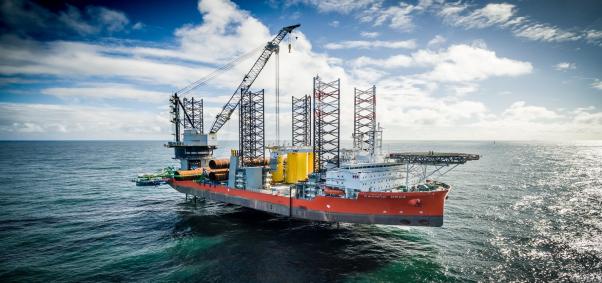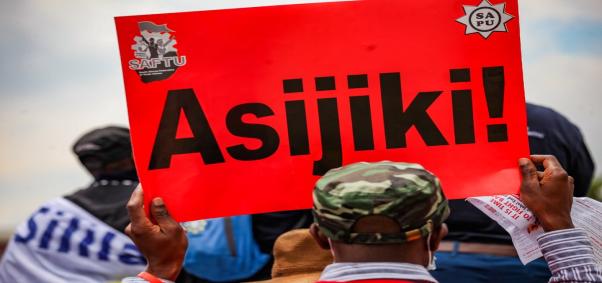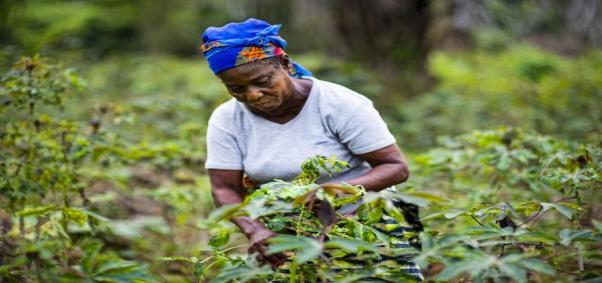
Today, it is clearer than ever that climate action and economic growth go hand in hand. This was the simple but powerful message that emerged from the first New Climate Economy report by the Global Commission on Economy and Climate when it was launched in 2014. The flagship 2018 report from NCE and the Global Commission, which included the headline finding that bold climate action can deliver at least US$26 trillion in net global economic benefits through 2030, was a breakthrough in showing once and for all that ambitious climate action is a win-win-win for the climate, people, and the economy. Nearly a decade later, the collective supporting evidence is stronger than ever, and a new narrative has taken root.
A growing consensus of leaders, economists and the public no longer see climate action as a cost to the economy, but instead as an investment in a stronger, fairer future with high rates of return for growth and broader societal prosperity. Ambitious climate action can drive efficiency and lower costs, spark innovation and dynamism, create jobs, build resilience to shocks, and re-shape expectations about the future. Media coverage of these issues, previously confined to the environmental section of newspapers or overlooked entirely, has spilled into the business and finance sections, and increasingly onto the front pages. In short, understanding of the opportunity that lies in climate action has gone mainstream, and with good reason.
Renewable energy with storage is now increasingly outcompeting new fossil fuel power around the world. High and volatile gas and oil prices have further improved this calculus, and supply disruptions and price spikes in the wake of Russia’s war in Ukraine have starkly reminded us of the risks of fossil fuel dependence and import-dependent economies. To avoid locking in these vulnerabilities in the long term and deliver energy access to all by 2030, we must ensure the world continues accelerating investments in clean energy solutions, even as emergency measures are put in place to address the short-term energy crisis.
The opportunities and urgency of investing in nature are also increasingly clear. Forests provide an invaluable role as carbon sinks, protect communities from the ravages of climate-related disasters and ensure food security in uncertain times. But nature’s true value cannot be realized without clear strategic direction from decision-makers, strong public policies, and a boost in investment.
While the narrative has shifted, and the opportunities of an accelerated transition to net zero are clearer than ever, progress risks stalling due to lack of investment. Financial mobilization for climate action has long fallen short. Now rising debt and inflation are further limiting and delaying governments’ abilities to mobilize finance for climate action, especially for adaptation and resilience. This is particularly acute in emerging and developing economies.
Meanwhile, extreme climate events are becoming increasingly frequent and severe, with catastrophic impacts all around the world. The rapidly rising number and intensity of hurricanes and storms, wildfires, floods, and heat waves are causing death, illness, and destruction to people, communities, and nature worldwide. Climate change is driving water insecurity, undermining food security, disrupting commerce, and more. Those in the Global South are most vulnerable to the impacts of climate change and face a growing crisis of external debt that has been exacerbated by the COVID-19 pandemic, rising food and energy costs, and monetary tightening by major economies. This is the core injustice of climate change: those least responsible have the fewest resources with which to counter mounting impacts and risks.
At a time of unprecedented challenges to the international order and multilateral diplomacy, COP27 is a critical opportunity for leaders to re-commit to evidence-based action, with global cooperation and solidarity at the heart.
A central measure for success at the COP27 Summit in Sharm el-Sheikh, Egypt, is whether the world stands with the more than 3.3 billion people who live in countries highly vulnerable to climate impacts. At this pivotal time, when there’s a serious risk of backsliding, leaders need to understand and embrace the economic and development case for climate action and double down on investing in a better future – one that is just, sustainable, and resilient.
Ahead of COP7, the Global Commission on the Economy and Climate calls for accelerated progress in six key areas:
- ENERGY – Respond rapidly and responsibly to the short-term energy crisis by driving the development and adoption of low-carbon technologies that will strengthen energy security
In the immediate energy supply crisis driven by Russia’s war on Ukraine, Europe and the world must improve energy security and manage energy prices for consumers and businesses while also delivering clean, secure energy access to all. In the short run (i.e., the next 12-24 months) this may involve some trade-offs with climate objectives, as policymakers balance energy security, consumer living standards and climate concerns. In parallel and over the medium term (2-8 years) it is essential to address these concerns in a way which reduces energy poverty and accelerates the transition to clean, affordable, and secure energy at home and internationally.
That medium-term challenge can be met through actions starting today. These include policies to incentivize investing in centralized and decentralized renewables technologies and related battery storage; digital systems to enable “smart grid” energy management; and the expansion and upgrading of transmission and distribution systems, as well in supply chain capacity to ensure reliable and accessible manufacturing of key technologies and inputs to meet the rise in demand. It also means avoiding locking in unnecessary new fossil fuel infrastructure, such as new production of oil and gas, building new pipelines, etc., which will not help with the immediate crisis and will not be needed in the medium- to long-term as clean energy sources ramp up.
More needs to be done, notably in the commercial banking sector and by development finance institutions — from multilaterals to bilaterals and national development banks — to highlight the societal costs and risks of investments in fossil fuels and to incentivize clean energy investment. There is a need to bridge large regional gaps in the pace and scale of investment. This clean energy investment will be at the core of the new growth story.
Public development banks are well placed to support just, clean energy transitions and scale-up of innovative projects. They can support governments to undertake essential energy policy reforms, support knowledge production and diffusion, and help build human and institutional capacity to support the clean energy transition. Development banks can also provide the necessary liquidity so that countries can meet unforeseen budgetary expenditures to deliver clean energy programmes.
It’s also time for governments to finally stop subsidizing fossil fuels. In 2021, direct subsidies and tax breaks to fossil fuel production and use almost doubled, reaching $697 billion. This money could be much better spent on clean energy solutions, and particularly on enabling and accelerating electricity access for all who lack it in sub-Saharan Africa and parts of developing Asia.
- JUST TRANSITION – Accelerate a just transition to cleaner energy and more sustainable and food-secure economies for workers and communities
The just transition movement is being increasingly embraced within countries and at the international level to help those affected by economic losses or dislocation from the impacts of climate change and the transition to zero-carbon economies. Appropriate actions should be taken to support a just transition, to ensure that the benefits and opportunities of the shift to a new economy are shared widely. This will require dialogue with government, workers, unions, communities, and civil society in the development of just transition plans, to ensure inclusivity, transparency, and confidence. It will also require understanding the costs of the transition and commitment to delivering the finance needed.
Just transition partnerships will be important but must not add debt to already constrained budgets in developing countries. Such partnerships should aim to accompany people, communities, and businesses to move out of fossil fuel industries and consumption patterns towards more sustainable alternatives, with special attention to communities faced with a loss of livelihoods and deterioration of living standards.
To ensure a just energy transition, governments need to tackle the social dimensions of the clean energy revolution that is already underway. This includes policy attention to help people adapt to how jobs are shifting through upskilling and training, as well as territorial development and social resilience issues, for example through tailored use of social protection mechanisms to help transition the most affected communities.
- ADAPTATION & RESILIENCE – Build resilience to climate impacts and support climate adaptation by ensuring required resources reach the communities that need them the most
Climate change has already increased economic losses from weather-related disasters by a factor of seven in the past 50 years, and impacts will escalate with every increment of warming. Water resilience is a major issue in cities, especially in Africa.
Adaptation needs in developing countries are estimated to be five to 10 times greater than current finance flows, and this gap is widening. Investing in key services, including through basic infrastructure for safe housing, water, sanitation, energy, and transportation, are critical for reducing inequality at community level within cities and to bridge urban-rural service divides. Essential resources are needed for disaster risk management such as early warning systems and evacuation planning. We must also recognize that there are many opportunities that combine mitigation, adaptation, and development to great effect (e.g. protecting mangroves, developing decentralized solar, restoring degraded land, public transport, etc.).
Rich countries must show how they will double adaptation finance by 2025 from 2019 levels (thus raising adaptation finance from about $20 billion to $40 billion per year, per the COP26 commitment), to improve the quality of this finance, and ensure that these resources reach the communities that need them the most. By COP27, countries must also make progress on substantive discussions on the Global Goal on Adaptation. The Global Goal should integrate locally led adaptation principles to ensure that more finance is accessed and managed by local actors that are closest to the communities in need.
Adaptation finance has increased in recent years but remains far short of the need, especially in developing countries. Development finance institutions have a crucial role to play in bridging adaptation financing gaps and in supporting investments in building resilience to climate variability and future climate change.
- LOSS & DAMAGE – Help developing countries and the most vulnerable respond to the devastating losses and damages from climate change that they are already experiencing, but for which they are least responsible
At our current 1.1°C of warming above pre-industrial levels, the world has entered a new and dangerous era of climate change impacts causing huge losses and damages (L&D) and driving up inequality in the world’s poorest countries and communities – namely those that have contributed least to the climate crisis.
The African continent currently loses between 5% and 15% of per capita GDP growth annually to climate change. The world’s 20 most climate vulnerable countries have lost approximately $525 billion over 2000-2019 because of the climate crisis. Non-economic L&D is also profound and far-reaching, encompassing loss of life, of territory and cultural identity, of Indigenous and local knowledge, of biodiversity, and harm to human health.
Finding the means to address L&D directly will be a central measure of success for the international community. Failure to agree concrete steps on L&D finance has the potential to derail the COP27 negotiations. Action on L&D must be understood to go beyond relief, rehabilitation, and recovery from disasters to include support for safe migration and resettlement. Resources must reach the local level, and those affected must be empowered to access and help make decisions about how finance is spent.
- NATURE – Protect and restore nature
Protecting and restoring nature is key to a resilient, healthy 1.5°C world. Nature-based solutions can provide over one third of the climate mitigation needed to meet the Paris climate goals. They are a cost-effective way to drive inclusive economic growth, increase the resilience of communities and infrastructure, protect biodiversity, improve food and nutrition security, and more. Vulnerable and marginalized groups stand to benefit greatly from investments in nature-based solutions, if done right.
Yet nature-based solutions are dramatically underfunded, receiving less than 3% of total climate finance. Public and philanthropic investors have an urgent role to play by demonstrating and rolling out nature-based business models and catalyzing private capital at scale to deploy them.
Development finance institutions can play an outsized role in mobilising capital for nature-based solutions by supporting new business models and providing catalytic finance for them, using de-risking instruments to attract more private investment, and offering expertise and garnering partnerships to mobilize additional private capital. Government shareholders should push DFIs to make nature a priority in their climate and development operations, embedding it in their climate targets and designing financial products to respond to the unique needs of nature-positive businesses.
There are three big forest biomes that will determine whether we can meet the opportunities nature has to offer for mitigation, adaptation, and socio-economic development. These are the Amazon, the Congo, and the Indonesia basin. We urge the governments of these biodiversity and carbon reservoirs of global relevance to craft integral roadmaps with climate, nature, and people at the heart.
Major reforms are needed to the world’s food and land use systems, which are the primary driver of biodiversity loss. Research from the Food and Land Use Coalition shows that it is possible to bring climate change under control within the 1.5°C pathway, protect nature and biodiversity, ensure healthier diets for all, improve food security, strengthen rural economies and unlock $4.5 trillion in new business opportunities each year by 2030.
Governments must also reduce or redirect subsidies that are driving ecosystem destruction and species extinction, including at least $520 billion, $350 billion, and $155 billion per year received by the agriculture, water and forestry sectors, respectively.
Multistakeholder groups have called for a net-zero, nature-positive economy by 2030, urging further action and ambition to address the biodiversity crisis in key sectors including cities, food systems, and forests. Elevating the call for a nature positive economy is imperative through the biodiversity COP15 and climate COP27.
- FINANCE – Raise and steer finance for climate action
COP27, as an African COP, is an opportune moment to go beyond the promised $100 billion of climate finance with an immediate acceleration in the delivery of both development and climate finance. It must begin to articulate a roadmap for an ambitious post-2025 climate finance target. A major focus will need to be an expansion of financing for country- and region-specific just energy transition partnerships (JETP), building on the South African model launched at COP26, and ensuring that new finance does not increase indebtedness in developing countries. The JETP is a long-term vision and builds on an open and systemic approach. In South Africa, a balanced governance mechanism is being developed, aiming to bring together development banks, international partners, private companies, and civil society.
A new set of specific and integrated climate and development finance commitments needs to be firmed up immediately, in time for COP27 in Egypt, to have real impact by 2025. We recommend a multi-point financing policy action agenda, targeting climate action and resilience-building to climate impacts, which includes:
- doubling climate finance from bilateral donors from $30 billion in 2018 to $60 billion in 2025;
- increasing financing through multilateral concessional funds, e.g. including through the use and expansion of Special Drawing Rights; and by increasing DFIs’ capital base and financial capabilities at scale (including through concessional finance and greater use of blended finance products), and granting them access to key multilateral funds;
- tripling the percentage of multilateral development bank financing from 2018 to 2025;
- partnering with private sector actors to double private finance from 2018 to 2025;
- significantly scaling up debt-free financing through voluntary carbon markets, while ensuring the right mechanisms are put in place to assure the quality and integrity of such finance; this has the potential to mobilize finance in the tens of billions of dollars for priorities such as accelerating the phase-out of coal and the restoration of forests and degraded land; and
- ensuring mandatory and transparent disclosure of climate-related risks to shift commercial finance away from fossil fuels and polluting investments and towards investments that can deliver net-zero goals.
It is also time to seriously explore and implement creative solutions to bridge the green finance gap, in particular a tax on the recent windfall profits of oil and gas companies, or other revenue sharing options. These could be used to help pay for L&D in vulnerable countries. The International Council on Clean Transport (ICCT) recently calculated that a tax on frequent flying could generate $120 billion annually – enough to fully fund a transition from fossil fuels to more sustainable fuels in aviation.
Getting the financing right will enable transformative change in all priority areas, setting us on a path to success. The future of people and the planet will be shaped by the capital investments realized over the next 10-20 years. Much of this investment will come from the private sector if we set out the right regulatory conditions to guide it, but public investment must rise to complement and catalyze this.
The Global Commission on the Economy and Climate remains committed to continuing to identify and support the vast opportunities for climate action and socioeconomic development to accelerate climate action and inspire political leadership for a just, climate-resilient future.
Signed by:
Sharan Burrow
General Secretary, International Trade Union Confederation and Co-Chair of the Global Commission on the Economy and Climate
Lord Nicholas Stern
IG Patel Professor of Economics and Government at the London School of Economics and Co-Chair of the Global Commission on the Economy and Climate
Paul Polman
Business Leader, Climate and Equality Campaigner, Co-author of “Net Positive” and Co-Chair of the Global Commission on the Economy and Climate
On behalf of the Global Commission on the Economy and Climate
For press inquiries or more information, please contact:
Madhavi Ganeshan, Director of Engagement, WRI, madhavi.ganeshan@wri.org
Yelena Akopian, Communications Manager, WRI, yelena.akopian@wri.org
Freya Stanley-Price, Communications Manager, WRI, freya.stanley-price@wri.org






